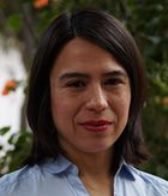Guest blog by Katia Chornik

Katia Chornik
In this guest blog, Katia Chornik addresses language and inclusion within digital research projects.
In 2014, on the 25th anniversary of the World Wide Web, the UK government published a policy paper titled ‘Government Digital Inclusion Strategy’, which sets out a series of measures of the UK government and its partners from the public, private and voluntary sectors to increase digital inclusion. The document identifies language as one of the main challenges that people face in relation to the Internet, alongside location, accessibility, cost, technology and infrastructure. The remarks about language, however, only refer to language specifically related to the Internet, advising that it should be “less intimidating and easier to understand by everyone”. Considering the high level of multiculturalism in the UK, it is striking that the government’s strategy does not make any comments about the provision of digital content in languages different from English.
Like governmental bodies and their partners, higher education institutions in the UK provide scant digital content in languages different from English, with the exception of institutions in Wales, which give the Welsh language a similar relevance to the English language. Meanwhile, the presence of foreign languages on open digital platforms of British universities is almost inexistent, with the exception of a few institutions that have branches abroad, for example the University of Nottingham, which offers part of its website content in Chinese language. It can be assumed that the dominant monolingual tendency in British universities’ digital content is rooted in the generalised belief that English is universally spoken.
In the case of digital contents originating in research projects in the area of Modern Foreign Languages, what is the relevance of making these available in other languages in addition to English? If these contents are generated solely for researchers’ own purposes, and aimed at reaching proficient English readers only, perhaps the relevance is not so evident. But if it is sought to be inclusive towards audiences who may not be competent in English language (particularly those whose main languages relate to the topic of the research) and if contents are meaningful to audiences beyond academia, then availability in more than one language is justifiable. On the other hand, if primary materials have been obtained originally in foreign languages and from people who are not competent in English language, there is an ethical underpinning to make the data accessible in original languages too.
Language and inclusion have been central concerns to a bilingual digital project I am involved in, Cantos Cautivos (Captive Songs), which compiles songs and testimonies on musical experiences in centres for political detention and torture in Chile during the dictatorship led by Augusto Pinochet (1973-1990). Through collecting and disseminating these materials, this project seeks to contribute to the historical memory of the dictatorship, and to ongoing debates and research on human rights violations in other historical and geographical contexts. Cantos Cautivos, launched in 2015, was born out of my wider Leverhulme research at the University of Manchester (2013-16), and of ongoing collaborations with former political prisoners and the Chilean Museum of Memory and Human Rights.
The project has an international audience: 78% is Spanish-speaking, 42% is English-speaking, 3% Portuguese speaking, 1% French speaking, and 1% German-speaking, according to our Twitter audience figures. Former political prisoners have been involved in many aspects of the project, from the production of primary data, writing of explanatory texts and website design, to negotiation of partnerships with external organisations and dealings with ethical issues. Involving former prisoners in matters beyond the production of primary material has increased engagement and mutual accountability. In particular, their participation in the production of explanatory texts has ensured that the ways in which their histories are presented ties in with their needs and wishes. Regarding languages, the project has aimed to place Spanish and English at equal levels, in order to be as inclusive as possible with our audiences. For instance, in our social media postings, we have adopted a random order of languages to avoid the perception of a linguistic preference.
In the UK, the number of digital MFL projects are available in languages in addition to English is growing. This approach offers great opportunities and benefits to researchers not only in terms of reach and engagement but also regarding inclusivity and reciprocity towards the cultures studied. It is to be hoped that this trend continues to grow.